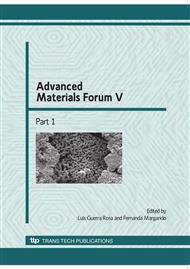p.1280
p.1286
p.1292
p.1300
p.1306
p.1313
p.1321
p.1329
p.1336
Microtomography-Based Pore Structure Modelling of Geologic Materials Used as Building and Dimension Stones
Abstract:
In this paper, an initial X-ray Computed Tomography study of sulphate salt degradation of two Portuguese Dimension Stones (“Semi-rijo” and “Mocacreme”) is presented, based on the Standard EN 12370 (1999). This study was performed using a high resolution X-ray Computed Tomography, a 3D X-ray microscopy non-destructive technique, in order to get representative digital information on 3D texture of the external surface and of the interior of visible light opaque objects for imaging and eventually measuring them, at resolutions in the m range. This will produce spatial quantitative information map on the density distribution of the scanned samples, usually associated to different mineral phases and voids’ textures constituting the natural materials. Both types of stones are also being investigated by the combined application of classic methods: Optical Microscopy, Scanning Electron Microscopy and Mercury Injection Porosimetry (MICP). Most of those classic studies use mainly traditional 2D imaging techniques, none of these being able to produce the 3D resolution details that X-ray micro-tomography enables. In order to achieve future better qualitative and quantitative integrated models, it will be important to combine its non destructive and 3D characteristics results with those of 3D MICP models obtained for such complex materials. This enables to qualitatively and/or quantitatively assess the evolution and decay potential of different phases and voids (pores + fissures) textures in different environmental interaction conditions. So, in order to set-up more efficient forecasts of their engineering properties behaviour in a given environment this study is an essential initial complementary step to compare and integrate in near future studies all the advantages and disadvantages of the application of these classic and new methods, based respectively upon visual examination of the samples’ exteriors and on micro-tomographic image models of the samples’ interiors and surfaces, to these geologic materials.
Info:
Periodical:
Pages:
1306-1312
Citation:
Online since:
January 2010
Keywords:
Price:
Сopyright:
© 2010 Trans Tech Publications Ltd. All Rights Reserved
Share:
Citation:


